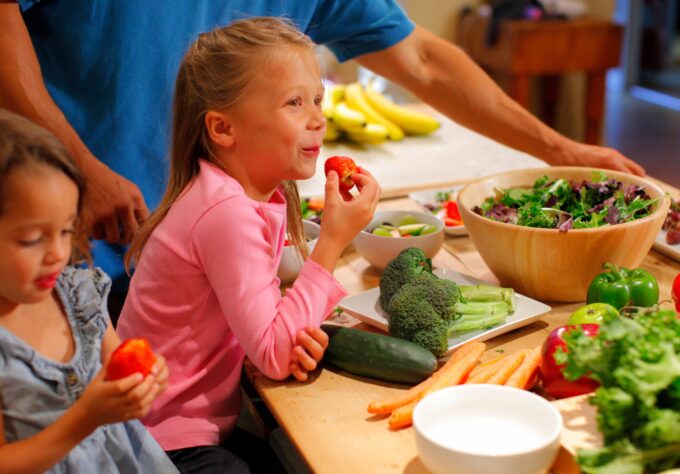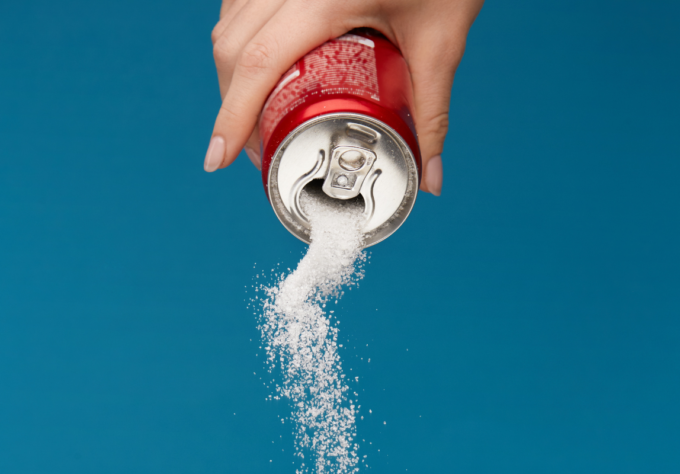A trip to the grocery store can quickly become overwhelming once you turn the corner and head down the aisle with cereals and bars. You could easily end up leaving the store empty handed in frustration. Cereals and bars for kids are an easy alternative for a quick meal or a snack. With so many options, how do you know if what you are buying is the best and healthiest one?
In 2018 the American Academy of Pediatrics released a report stating that food additives are particularly harmful to children since their metabolic systems are still developing. These chemicals may disrupt endocrine function, delay puberty, cause weight gain and trigger insulin resistance. Because of all these risks, it is important to choose cereals and bars that emphasize organic and natural ingredients.
Bars:
The “bar” market is not just limited to granola bars. There are protein, fiber, and nut bars all marketed for kids. Many people think that bars are healthy because they generally are made from grains and contain nuts and dried fruit. But many of these bars contain high amounts of added sugar and are coated in chocolate, making them no more than a glorified candy bar.
How to Choose the Healthiest Bar
So how do you pick the best, healthiest ones? The first thing to do is flip the box over and look at the Nutrition Facts label at the ingredient list. Those listed first are present in the highest quantity. Stay away from bars that contain hydrogenated or partially hydrogenated oils, palm and palm kernel oils, high-fructose corn syrup, enriched wheat flour, wheat flour, unbleached flour, or bleached flour.
Many fruit filled bars have a lot of sugar and high-fructose corn syrup. Look for bars that contain whole grain wheat, whole grain flour, whole oats, nuts, seeds, and fruit. Good picks contain simple, real food ingredients like berries, apples, almonds, oats, quinoa, chia, and hemp.
Once you are finished scanning the ingredient list, then move on to the Nutrition Facts label.
- Calories: Since many families use bars as a snack, the calorie amount should be between about 100-200 calories per serving to reflect what would be suitable for a child’s snack.
- Sugar: Many options on the shelf today are loaded with extra sugar or artificial sweeteners. Steer clear of bars that list table sugar, syrups such as high fructose corn syrup, or refined grains among the first few ingredients. Sugar content should be less than 8 grams per serving.
- Protein: Like fiber, protein helps to keep kids satisfied and provides a source of steady energy. Kids need an adequate amount of protein to support growth. The Dietary Reference Intake (DRI) for protein is 1.1 grams/kg/day (13 gm/day) for 1-3 year olds and 0.95 grams/kg/day (19-24 gm/day) for 4-13 year olds. A greater number of companies are launching protein bars for kids. Some are gluten free and are lower in sugar, which makes them a better choice for a balanced diet. Look for a bar with at least 2 grams of protein per serving.
- Fat: You don’t have to be too afraid of the total fat content, but you should be careful about the saturated fat or trans fat amount. While nuts and seeds are a good source of saturated fat, you still don’t want to overdo it. Pick a bar with the total fat at 5 grams or less, the total saturated fat at 2 grams or less, and total trans fat at 0 grams per serving.
Many of the new bars on the market emphasize fruits, nuts, seeds, and grains. Bars are portable and shelf-stable making them a quick and easy snack for toddlers. Read the nutrition facts label and the ingredient list. Remember, though, that nothing can replace less processed and whole food snacks like nuts, fruits or veggies.
You can always opt to make your own kid-friendly healthy snacks. Layer some Greek yogurt with fruit and make a parfait topped with almonds. Whip up some of your own granola or trail mix and include your toddler’s favorite ingredients. By doing this you can control the amount of fat and sugar you’re giving your child. Be sure to keep plenty of fresh fruits and vegetables stocked at home for quick and easy snacks.
Cereals:
Breakfast cereals are affordable, quick to prepare, require little clean up, and are generally well-liked by even for the pickiest of eaters. The grocery store aisle may stock over 100 different varieties! Most brands claim to offer wholesome and healthy cereals for kids, but contain loads of sugar and salt. In fact, children’s cereals contain upwards of 40% more sugar than adult-marketed ones. Just as you did with bar shopping, you should do the same when looking for a cereal, that is, examine the Nutrition Facts label and ingredient list.
Here are a few other things to specifically look for when selecting a breakfast cereal.
- A serving size with ≤200 calories per serving. This allows for adding milk and fresh fruit. Don’t forget to verify how much is equal to 1 serving. This can range from ½ – ¾ of a cup depending on the type of cereal.
- Low in sugar with ≤9 grams of total sugar per serving: Read the label. Sugar can come in multiple forms like evaporated cane juice or fruit juice concentrate. Some popular brands include dried fruit that’s coated in sugar. A better option is to select the lower sugar cereal and add your own fresh fruit to help kick up the flavor. It’s not one of the most nutritious choices, but you could mix a cereal that’s higher in sugar with another no- or low-sugar option. But keep the total sugar count of this mixture to ≤9 grams per serving.
- High-fiber with at least 5 grams of fiber per serving: Read the nutrition facts labels to see how much fiber the cereal contains. Also, look at the ingredient list to see if 100% whole wheat, oats, or another grain are top on the list. Good picks are those where the box indicates “whole grain” or “100% whole gain.” If you want to boost up the fiber of a lower-fiber choice, you could always add fresh fruit, nuts, flax, or chia seeds.
- Vitamin and mineral content: Food fortification began in an effort to alleviate common nutrient deficiencies. Cereal is one of the most commonly fortified foods. The best cereals will contain B vitamins like thiamin (B1), niacin (B6), pantothenic acid, vitamin B 12, plus iron, zinc, vitamin D and calcium. Take a look at the Daily Value for micronutrients, which is at the bottom of the Nutrition Facts panel. Any percentage above 20% means the cereal is a good source for that nutrient.
- Stay away from artificial colors or flavors: Some brands use artificial colors to make them more kid-appealing. However, this makes them less of a favorable nutritious option. Food dyes and coloring have undergone scrutiny over the years and many people are finding that they are sensitive to them. They have been linked to attention problems as well as gastrointestinal issues. It is wise to avoid brands or varieties that have any such additives.
And there you have it! Just follow the advice and guidance above and you can conquer the cereal and bar aisle like a champ!
Healthy Bars for Kids:
Clif ® Z Bar Protein: Peanut Butter Chocolate, 140 calories, 5 gm protein, 4 gm fat, 8 gm sugar, 3 gm fiber
Cascadian Farms ® Organic: Oatmeal Raisin Granola Bars: 70 calories, 1 gm protein, 2 gm fat, 7 gm sugar, 3 gm fiber
KIND ® Healthy Grains Bars: Oats and Honey with Toasted Coconut: 150 calories, 3 gm protein, 4 gm fat, 7 gm sugar, 3 gm fiber
Quaker ® Harvest Ancient Grains Honey Cranberry Almond Granola Bars: 150 calories, 3 gm protein, 4.5 gm fat, 8 gm sugar, 3 gm fiber
Enjoy Life ® Sunseed Crunch: 140 calories, 3 gm protein, 4.5 gm fat, 5 gm sugar, 2 gm fiber
KIND® Healthy Grains Salted Caramel Popped Bars: 140 calories, 3 gm protein, 4 gm fat, 7 gm sugar, 2 gm fiber
Kashi ® Honey Almond Flax: 140 calories, 3 gm protein, 5 gm fat, 7 gm sugar, 3 gm fiber
Enjoy Life ® Grain and Seed Bars Chocolate marshmallow: 120 calories, 4 gm protein, 5 gm fat, 4 gm sugar, 2 gm fiber
RX Bars ® Kids PB&J: 130 calories, 7 gm protein, 4 gm fat, 10 gm sugar, 3 gm fiber
Health Warrior ® Chia Bar Apple Cinnamon: 100 calories, 3 gm protein, 4.5 gm fat, 3 gm sugar, 5 gm fiber
Healthy Cereals for Kids:
Barbara’s Bakery ® Multigrain Spoonfuls: 120 calories, 3 gm protein, 1.5 gm fat, 5 gm sugar, 4 gm fiber
Kashi ® 7 Whole Grain Puffs: 140 calories, 5 gm protein, 1.5 gm fat, 0 gm sugar, 4 gm fiber
General Mills ® Cheerios: 100 calories, 3 gm protein, 2 gm fat, 1 gm sugar, 4 gm fiber
General Mills ® Kix: 110 calories, 2 gm protein, 1 gm fat, 3 gm sugar, 3 gm fiber
Barbara’s Bakery ® Original Puffins: 90 calories, 3 gm protein, 1 gm fat, 5 gm sugar, 5 gm fiber
Barbara’s Bakery ® Cinnamon Puffins: 90 calories, 3 gm protein, 1 gm fat, 5 gm sugar, 5 gm fiber
Kashi ® Heart to Heart Toasted Oat Cereal: 150 calories, 4 gm protein, 2.5 gm fat, 7 gm sugar, 5 gm fiber
Barbara’s Bakery ® Peanut Butter Puffins: 110 calories, 3 gm protein, 2 gm fat, 6 gm sugar, 2 gm fiber
Quaker ® Life Original: 120 calories, 3 gm protein, 1.5 gm fat, 6 gm sugar, 2 gm fiber
Barbara’s Bakery ® Snackimals Vanilla Blast: 110 calories, 2 gm protein, 0.5 gm fat, 7 gm sugar, 3 gm fiber



